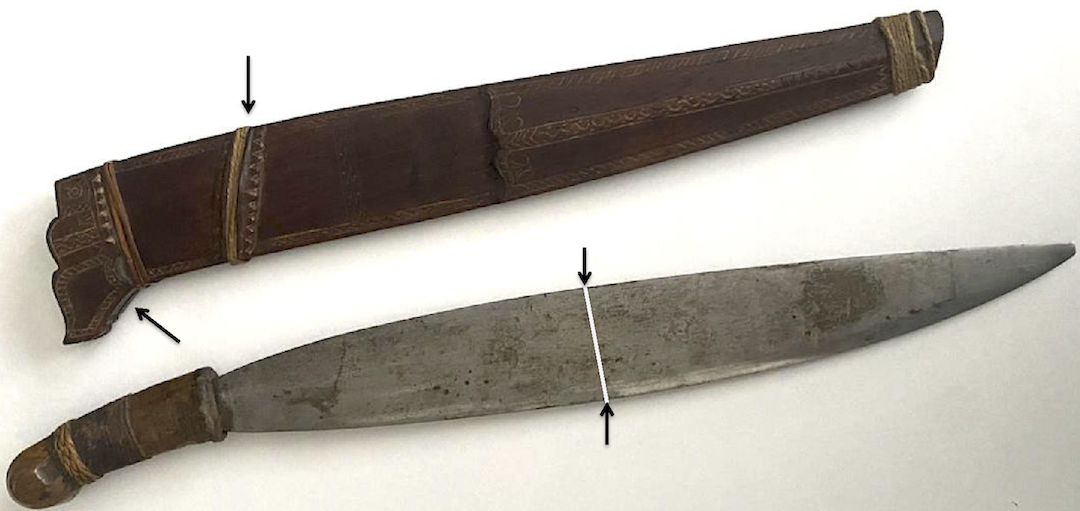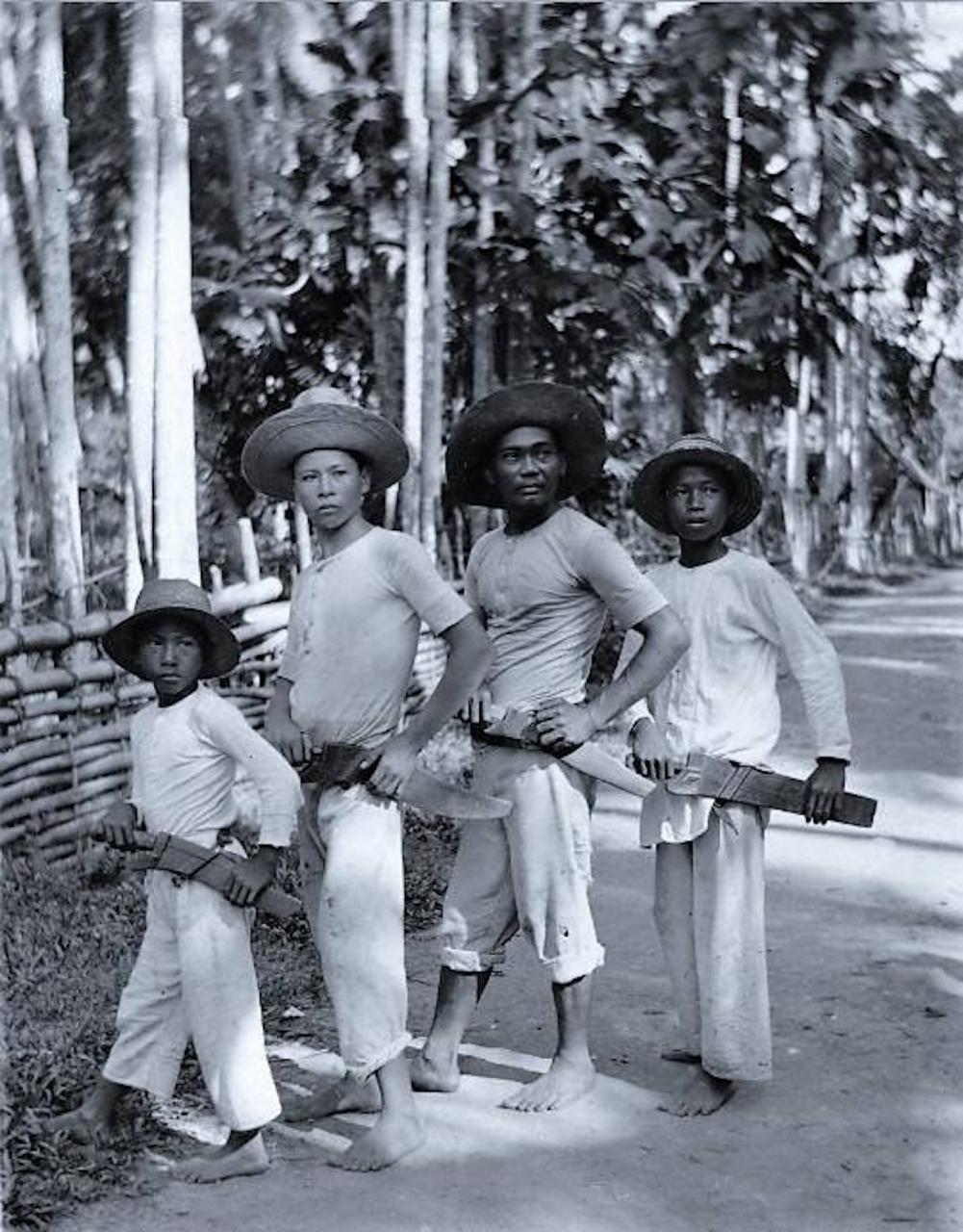Hi WW:
Interesting piece you have there. I took your picture and outlined where the maximum width of the blade occurs. It is actually on the hilt side of the blade rather than further towards the tip. A Palawano
badung has a much more forward-weighted blade, with the maximum width closer to the tip than the hilt. Thus, this is not a Palawano
badung IMHO. It is more in keeping with a Sulu blade that has been dressed in another fashion.
In the following picture, I have shown the line of maximum width on your blade and also two arrowed features of your scabbard: one is the slanted area of attachment for a string belt; the other is a small "wing" to the throat of the scabbard on its bottom side.

Now compare this arrangement with a Zamboanga
bolo. There is the same slanted attachment for the belt and a similar wing on the scababrd. Also, the hilts are made from similar light-colored hardwood and are consistent with a Zamboanga origin.

Here are some further pictures of that
bolo, which is probably of WWII vintage.


And here is an old picture of Chavacano men wearing these
bolos. The similar scabbard styles to yours are readily apparent.

To summarize, I think you have either a Sulu
barung blade dressed in Chavacano fashion, or a
bolo made and assembled in Zamboanga.